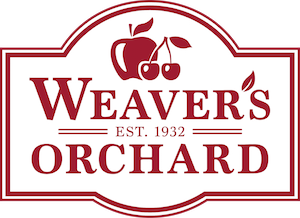Over the past year, my husband and I have incorporated a high amount of fresh produce, especially fresh juice into our daily diet. We decided to do this for a number of reasons, including health, taste and even price, as recent statistics from the United States Department of Agriculture (USDA) verify that eating produce fresh can be the cheapest option.

1. Processed Produce & Juice Has Hidden Ingredients
We first decided to switch to fresh-squeezed orange juice when a friend of mine showed me this article that shows how even “100% pure” and “fresh squeezed” orange juice is highly processed and has “flavor packets” and stabilizers added in to the juice. And the Food and Drug Administration (FDA) doesn’t require them to label these flavorings, since they are technically still derived from oranges.
Many other juice brands list added natural flavors, which the FDA defines as “essential oil, oleoresin, essence or extractive, protein hydrolysate, distillate, or any product of roasting, heating or enzymolysis, which contains the flavoring constituents derived from a spice, fruit or fruit juice, vegetable or vegetable juice, edible yeast, herb, bark, bud, root, leaf or similar plant material, meat, seafood, poultry, eggs, dairy products, or fermentation products thereof, whose significant function in food is flavoring rather than nutritional.”
2. Processed Produce Has Been Pre-Cooked
In addition to being uneasy about the so-called natural flavors in packaged produce, I also buy fresh produce because I know it is more pure and hasn’t been cooked. Canned produce is heated to high temperatures, which can damage some of the enzymes and nutrients. Most frozen produce has been blanched prior to being frozen. Most fruit juices on the market have been pasteurized, although sometimes you’ll come across a great place like Weaver’s Orchard that sells apple cider that has been treated with UV light instead of being pasteurized. Many canned or bottled produce items have added salt, sugar and other preservatives too, which can be easily avoided by choosing fresh produce.
3. Fresh Produce TASTES Much Better
When produce is processed, it loses much of its natural flavor and texture, so it requires more salt or fat to dress it up. You may need to alter your recipes to adjust to using fresh produce. For example, a green bean casserole isn’t going to be the same consistency with lightly steamed green beans. So maybe you’ll want to cook the green beans longer or switch to a different method, like lightly steaming and then tossing the green beans with olive oil and lemon juice and topping with toasted almonds.
4. Surprise! Fresh Produce is the Same Price or CHEAPER!
A study done by the USDA compared the cost of fruits and vegetables in a variety of different forms: fresh, canned, frozen and juiced. Their surprising results were that “the weighted average price for all fresh fruit was $0.18 per serving;” and “the weighted average price for all canned fruit was $0.24 per serving,” and “the weighted average price for all fruit juice was $0.20 per serving.” The scale averages out fruits from most to least expensive with apples, bananas and watermelon as the cheapest fruits.
Over the last few years, my food philosophy has become one where I believe that eating fresh fruits, vegetables and herbs is the best medicine – they are the “real food.” I try to eat about 50-60% produce, 25% protein and the remainder as whole grains and dairy. I try to avoid refined carbohydrates whenever possible. Even the USDA’s current dietary guidelines follow a similar approach now. After doing this research, I can now rest assured that fresh produce is the cheapest and best way to consume produce, and I will continue to invest more of my budget in these “healing” foods.
Here are some tips I’ve found useful to incorporate fresh produce and fresh juice into my daily diet:
Everyday Juicing Tips
- Pick, juice and freeze fresh fruit from Weaver’s Orchard
1. Puree fruit in a blender, food processor or Victorio strainer
2. Freeze juice in an ice cube tray
3. Transfer to a freezer bag
4. Pack an assortment of “berry juice cubes” in a wide-mouth plastic bottle when ready to drink it
5. Fill it the rest of the way with Weaver’s Orchard apple cider
6. Let it thaw and enjoy!
- Dilute fresh juice and smoothies with Weaver’s Orchard apple cider
- Order a box of juice oranges from Weaver’s and juice 1-2 oranges per person every morning (lasts 2-3 weeks for a family of 2
- Think in color groups (oranges, greens, reds, etc) when selecting fruits and vegetables to pair together. Think of combinations you like in salads, like pears and arugula or strawberries and spinach.
- Juice each item separately and freeze the pulp. Add fruit or carrot pulp to quick breads or add vegetable pulp in to turkey burgers, spaghetti, lasagna, etc
- If you are consuming fruit juice, make sure to watch your overall sugar intake and eat some fresh vegetables to avoid sugar overdose.
Tips for Incorporating Fresh Produce Into Your Daily Diet
- Pre-slice some vegetables (baby carrots and snap peas work really well) for snacks
- Plant salad greens and vegetables in your garden
- Find a mulberry tree to pick fruit from (they are extremely plentiful and ripe right now!)
